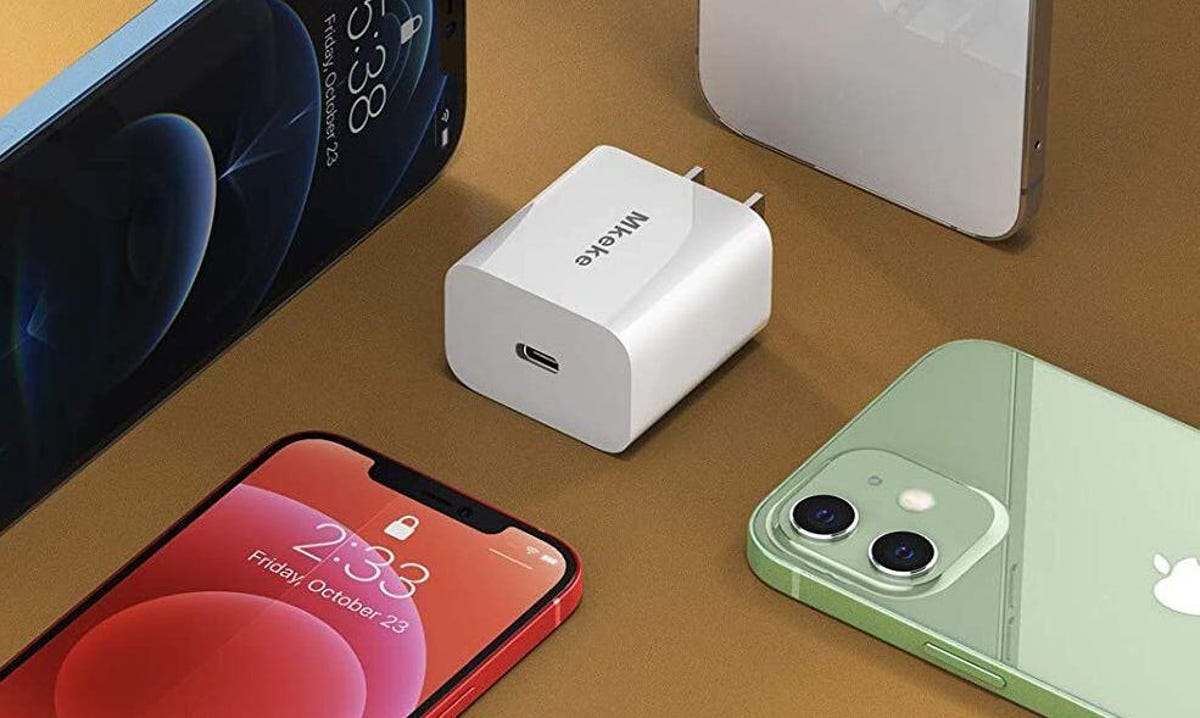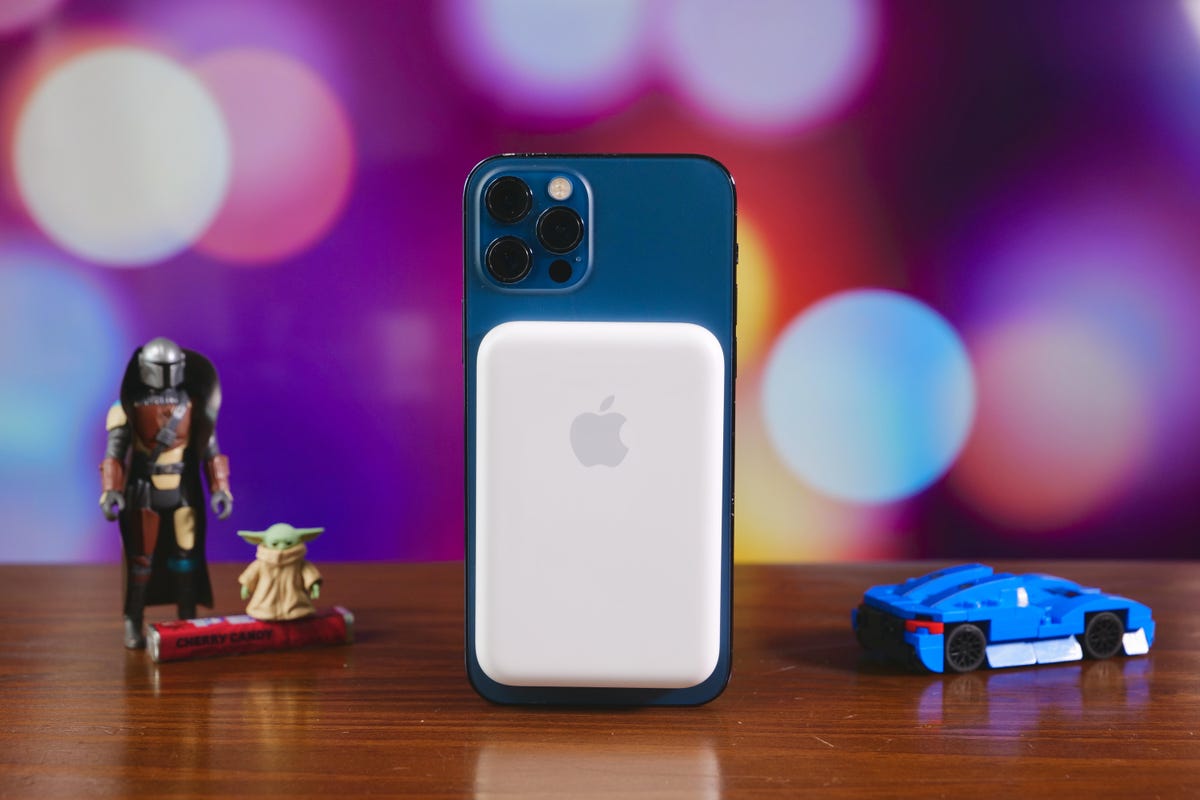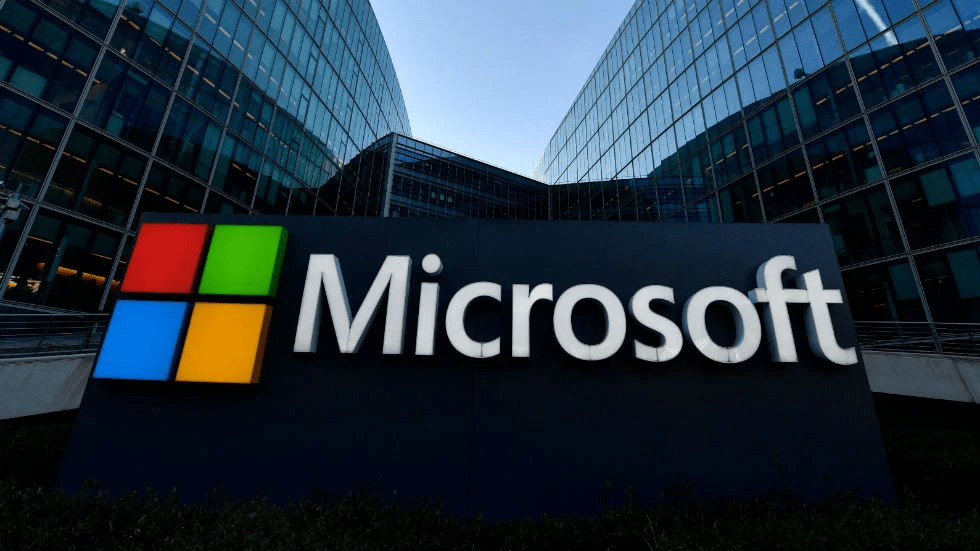Tech
Why a USB-C iPhone Could Be Coming Globally
The European Union has made its ruling: If Apple wants to sell new iPhones in the region, those devices will need to have a USB-C port before the end of 2024.
That means Apple’s proprietary Lightning connector, which has existed for more than a decade and established itself as a considerable money-maker for the tech giant, will need to be phased out of future iPhones. At least the ones going to the EU.
“We have no choice — as we do around the world, [Apple will] comply with local laws,” Greg Joswiak, Apple’s senior vice president of worldwide marketing, said at a Wall Street Journal tech conference on Oct. 25 when asked if Apple will adhere to the EU’s common charging law.
“We think it would have been better environmentally and better for our customers to not have a government be that prescriptive.”
While the legislation technically only applies to consumer electronics sold within the EU, Apple may be forced to decide on the fate of the Lightning port for iPhones bound for overseas. Most commercial phones charge and connect to accessories using the USB-C standard, but iPhones don’t. Could this mean future iPhones sold outside the EU will also transition to a USB-C charging port? Or will Apple make hardware changes by geography: Producing two iPhone variants to accommodate USB-C and Lightning — one for the EU and the other for the rest of the world?
Apple already modifies iPhone models regionally, as it has done with the iPhone 14. The US version only has an electronic SIM, while other variants retain the SIM slot, as Avi Greengart, analyst at Techsponential, points out. But he also thinks Apple has good reasons to move all iPhones to USB-C moving forward.
“…There are larger ecosystem, security, and accessory considerations with the power/data connector, so I think it is more likely that Apple moves all iPhones [globally] to USB-C in the iPhone 16 timeframe to comply with European regulations.”

Mkeke
For more than a decade, European lawmakers have pushed for electronic devices to include a standardized charger in a bid to reduce cable clutter and e-waste. The legislation, part of the amended Radio Equipment Directive, was finalized in June before the European Parliament voted overwhelmingly in favor of the rule in October. Its approval is widely seen as a victory for consumers, who will soon be able to use just one single USB-C charger across a range of accessories and devices, including higher-wattage ones like gaming laptops and 4K monitors. Its adoption was also viewed as a win for the environment. A European think tank estimates chargers put up to 13,000 tons of e-waste per year in the EU and have associated life cycle emissions of around 600 to 900 kilotons in carbon dioxide equivalents.
Apple has vociferously lobbied against the idea of a common phone charger. The tech giant argues such legislation could stifle innovation and exacerbate the e-waste problem since it would presumably render the Lightning cable obsolete for possibly a billion people worldwide. Apple, which collects fees from third-party companies that manufacture made-for-iPhone accessories, would potentially miss out on the earnings generated from every Lightning cable and accessory that’s compatible with the iPhone.
Despite Apple’s pushback, the tech giant has reportedly put a USB-C iPhone to the test. Noted Apple analyst Ming Chi Kuo predicts Apple will beat the EU mandate by a year, equipping a new iPhone with a USB-C port in 2023.
“USB-C could improve iPhone’s transfer and charging speed in hardware designs, but the final spec details still depend on iOS support,” Kuo wrote in a May post on Twitter.
For its part, Apple has been transitioning out of Lightning in other products for several years now. The tech giant included USB-C in 2015 with that year’s MacBook. It later replaced Lightning with USB-C on the iPad Pro in 2018, the iPad Air in 2020 and iPad Mini in 2021. In addition to including a USB-C port on a rumored 2023 iPhone, Kuo expects several other Apple accessories, including AirPods, the Magic Keyboard and the MagSafe Battery Pack, to switch over to USB-C, but he didn’t offer a specific timeline.
In the long run, the iPhone’s shift to USB-C is poised to benefit Apple customers — just as the legislation intended. Since most of the company’s iPads and Macs already use USB-C rather than Lightning, the move will streamline the charging experience. Apple loyalists currently need three different types of chargers to power the iPhone, MacBook, iPad and Apple Watch. For a company that prides itself on its ecosystem, Apple offers a cumbersome charging experience that runs counter to its ethos of simplicity.


Patrick Holland/CNET
“It does make sense for Apple to [switch to a USB-C iPhone] across markets, as it will not only enhance the experience of the users, who are also using iPads or Macs, but will also simplify the processes in the supply chain,” Will Wong, a research manager for the International Data Corporation, told CNET.
Even if Apple eventually makes the switch to a USB-C iPhone for all models, it’s possible the connector will only be used for a short time. Rumors point to Apple abandoning ports on the iPhone altogether, moving entirely to wireless charging and connectivity like with Apple’s MagSafe accessories.
“Portless is likely to be one of the developments Apple is looking at as we saw the introduction of the MagSafe wireless charger,” Wong said. “Nevertheless, there are hurdles like slower charging speed to overcome before fully going portless,”
A USB-C iPhone is perhaps more likely than ever to hit stores worldwide, however. It’s something that’s been on Apple fans’ wish lists for years as a USB-C port is more convenient and transfers data more efficiently than its Lightning counterpart. Whether that happens in 2023, 2024 or beyond remains to be seen, but Apple is readying itself and its iPhones for a transition in the EU, at the very least.
Tech
Google Unveils AI-Powered Pixel 9 Lineup Ahead of Apple’s iPhone 16 Release
Google has launched its next generation of Pixel phones, setting the stage for a head-to-head competition with Apple as both tech giants aim to integrate more advanced artificial intelligence (AI) features into their flagship devices. The unveiling took place near Google’s Mountain View headquarters, marking an early debut for the Pixel 9 lineup, which is designed to showcase the latest advancements in AI technology.
The Pixel 9 series, although a minor player in global smartphone sales, is a crucial platform for Google to demonstrate the cutting-edge capabilities of its Android operating system. With AI at the core of its strategy, Google is positioning the Pixel 9 phones as vessels for the transformative potential of AI, a trend that is expected to revolutionize the way people interact with technology.
Rick Osterloh, Google’s senior vice president overseeing the Pixel phones, emphasized the company’s commitment to AI, stating, “We are obsessed with the idea that AI can make life easier and more productive for people.” This echoes the narrative Apple is likely to push when it unveils its iPhone 16, which is also expected to feature advanced AI capabilities.
The Pixel 9 lineup will be the first to fully integrate Google’s Gemini AI technology, designed to enhance user experience through more natural, conversational interactions. The Gemini assistant, which features 10 different human-like voices, can perform a wide array of tasks, particularly if users allow access to their emails and documents.
In an on-stage demonstration, the Gemini assistant showcased its ability to generate creative ideas and even analyze images, although it did experience some hiccups when asked to identify a concert poster for singer Sabrina Carpenter.
To support these AI-driven features, Google has equipped the Pixel 9 with a special chip that enables many AI processes to be handled directly on the device. This not only improves performance but also enhances user privacy and security by reducing the need to send data to remote servers.
Google’s aggressive push into AI with the Pixel 9 comes as Apple prepares to unveil its iPhone 16, which is expected to feature its own AI advancements. However, Google’s decision to offer a one-year free subscription to its advanced Gemini Assistant, valued at $240, may pressure Apple to reconsider any plans to charge for its AI services.
The standard Pixel 9 will be priced at $800, a $100 increase from last year, while the Pixel 9 Pro will range between $1,000 and $1,100, depending on the model. Google also announced the next iteration of its foldable Pixel phone, priced at $1,800.
In addition to the new Pixel phones, Google also revealed updates to its Pixel Watch and wireless earbuds, directly challenging Apple’s dominance in the wearable tech market. These products, like the Pixel 9, are designed to integrate seamlessly with Google’s AI-driven ecosystem.
Google’s event took place against the backdrop of a significant legal challenge, with a judge recently ruling that its search engine constitutes an illegal monopoly. This ruling could lead to further court proceedings that may force Google to make significant changes to its business practices, potentially impacting its Android software or other key components of its $2 trillion empire.
Despite these legal hurdles, Google is pressing forward with its vision of an AI-powered future, using its latest devices to showcase what it believes will be the next big leap in technology. As the battle for AI supremacy heats up, consumers can expect both Google and Apple to push the boundaries of what their devices can do, making the choice between them more compelling than ever.
News
Microsoft Outage Hits Payment Processors

When major payment processing systems have problems, the issues impact many critical systems that society depends on. In this article, we’ll explain the cause of the Microsoft outage and discuss the impact computer networking issues had on Canada. We’ll also examine whether or not Microsoft was at fault and what businesses can do to prevent further outages.
What Happened With the Microsoft Outage?
The outage with Microsoft’s Azure payment processor resulted from a buggy security update from an outside company, CrowdStrike. CrowdStrike offers information technology security services for many Microsoft Windows computers. The company’s software developers sent a new update out, but instead of patching up minor issues with the existing software, the code within conflicted with Windows and prevented computers from booting up. Users expecting to start their computers for a typical day were instead faced with the dreaded “Blue Screen of Death” error message.
So, how does this produce a problem and a payment processor issue? Many computers running payment processing, among many other kinds of software used for airlines, banks, retail, and other essential services, couldn’t start and were unable to let payments through. This is a catastrophic issue for companies that are heavily reliant upon the speed and ease of an electronic transaction.
In Canada, the outage impacted critical computer systems for air travel. Flights couldn’t be paid for and booked, which caused major problems for customers unable to make transactions while flights remained grounded. Travellers stuck waiting for flights to take off made their way over to the airports’ Starbucks and other vendors, only to discover unusually long lines due to payment issues. Even online gamblers looking to take their minds off the situation couldn’t take full advantage of one of the fastest payment options out there because of the outage.
Aside from payments, hospitals for major health systems had to use paper to complete important tasks like ordering lab work and getting meals to patients. Emergency dispatch lines were temporarily unable to function correctly while their computer systems were down.
How Was the Outage Fixed?
Thankfully, CrowdStrike fixed the problem on their end quickly, mostly via an additional reboot that allowed CrowdStrike to send over unflawed code. Unfortunately, for some business and private customers, rebooting wouldn’t be enough with command-line level adjustments needed for the operating system to run correctly.
The Good and Bad of Outages
First, we’re thankful that the outage was not caused by hackers accessing and stealing a mountain of personal data. A recent outage with an automotive software provider went on for much longer and ended much worse for software provider CDK, which likely paid an undisclosed sum north of $20 million to get data back and systems restored.
By some chance, Microsoft is reported to have experienced its own outage, and many information technology professionals blame Microsoft in part for their issues because of how their systems attempted to fix the problem by rebooting over and over again, though some of Microsoft’s PCs needed to warn users to make a change manually. Unfortunately, any computer that required manual intervention took longer to recover, as a knowledgeable person had to access each computer affected by the issue. In some cases, between dealing with several hours of backlogged tasks and slow recovery processes, some businesses took days, not hours, to get back online.
The outage brings up another major point in the cybersecurity and computer industry. CrowdStrike and Microsoft are both big companies in their respective fields. As a result, the effects of bad code spread much further than they could have if there were more competitors making security products or if there were more software companies making operating systems like Windows. While only 8 million computers were believed to be affected out of a much larger global network, those are essential computers for worldwide communication and payment processing. Perhaps companies should be putting their eggs in more than one basket?
The testing methods for the outage are unclear—did CrowdStrike test the routine software update enough to detect the potential for a major outage? Apparently not.
What Should Businesses Do Next?
Software like Microsoft Azure’s payment systems come from what information technology professionals call ‘the cloud.’ The software is remotely managed over the internet, meaning that the computer that runs the system is not physically present at the location. Unfortunately, this also means that an issue with the internet can take critical systems out of service.
Businesses ranging from major airlines and banks to mom-and-pop stores would be well served by backup systems at their locations. These don’t have to be as primitive as the old-fashioned credit-card carbon-copy slide, but there are options available with consistent service that don’t repeatedly rely on the same networks.
Conclusion
There were certainly challenging moments for Canadian businesses and emergency services during the CrowdStrike and Microsoft outage. As they scrambled to understand the problem and waited, albeit briefly, for issues to resolve, many companies learned the importance of having local and reliable backup for their computer systems.
Tech
New photos reveal more details about Google’s Pixel 9 Pro Fold

Google’s secret new line of Pixel 9 phones isn’t that big of a secret anymore. Taiwan’s National Communications Commission (NCC) released new photos of the phones including the Pixel 9 Pro Fold from almost every conceivable angle.
Android Authority found the photos in the NCC archives and uploaded galleries of each of the four phones including the Pixel 9, 9 Pro, 9 Pro XL and 9 Pro Fold. They reveal some interesting details about the new Pixel phones.
The charging rates will be a little faster than the last generation of Pixel phones: Taiwanese authorities measured 24.12W for the base model, 25.20W for the Pro and 32.67W for the 9 Pro XL. The Pixel 9 Pro Fold, however, was the slowest of all of them at 20.25W. These numbers don’t often match up perfectly with the advertised ratings, so expect Google to be promoting higher numbers at its event.
Speaking of chargers, it looks like Google needed a bigger charger to power its new phones. Photos included in the NCC leak show each phone will come with a wall charger that’s around 45W depending on which model you purchase. The charger’s plug moved from the middle to the top of the brick.
The latest photo dump also shows the 9 Pro Fold unfolded for the first time. Google has moved the selfie camera to the inside screen for a wider field of view. The 9 Pro Fold also has a slimmer top and bottom, a reduced fold crease on the display and a full 180 degree unfolding angle to make a screen that’s just over 250mm or just under 10 inches.
These photos are the latest in a very long list of leaks of Google Pixel 9 photos. The last Pixel 9 leak came down yesterday showing two prototype models of the base and XL models. Google might look into buying a new combination lock for the high school locker where they apparently keep all their unreleased gear.

-

 News9 hours ago
News9 hours ago‘The deal is done:’ NDP Leader pulls out of supply and confidence deal with Liberals
-

 Health4 hours ago
Health4 hours agoManhood Miracle
-

 Sports3 hours ago
Sports3 hours agoUS Open: Jessica Pegula upsets No. 1 Iga Swiatek to reach her first Grand Slam semifinal
-

 Health2 hours ago
Health2 hours agoAncient Tonic Discovered 6,092 Years Ago By “Seer Of The Gods”… Boosts T — Restores “Horse Power” Libido And Energy In Just 8 Seconds…
-

 News6 hours ago
News6 hours agoCouche-Tard Inc. reports Q1 profit down from last year as consumers watch spending
-

 News3 hours ago
News3 hours agoCanfor shutting two northern B.C. sawmills affecting 500 staff, blames U.S. tariffs
-

 News20 hours ago
News20 hours agoEgyptian President el-Sissi makes his first visit to Turkey, as relations thaw
-

 News7 hours ago
News7 hours agoRoaring Game Returns: Olympic qualification a key storyline this curling season




















